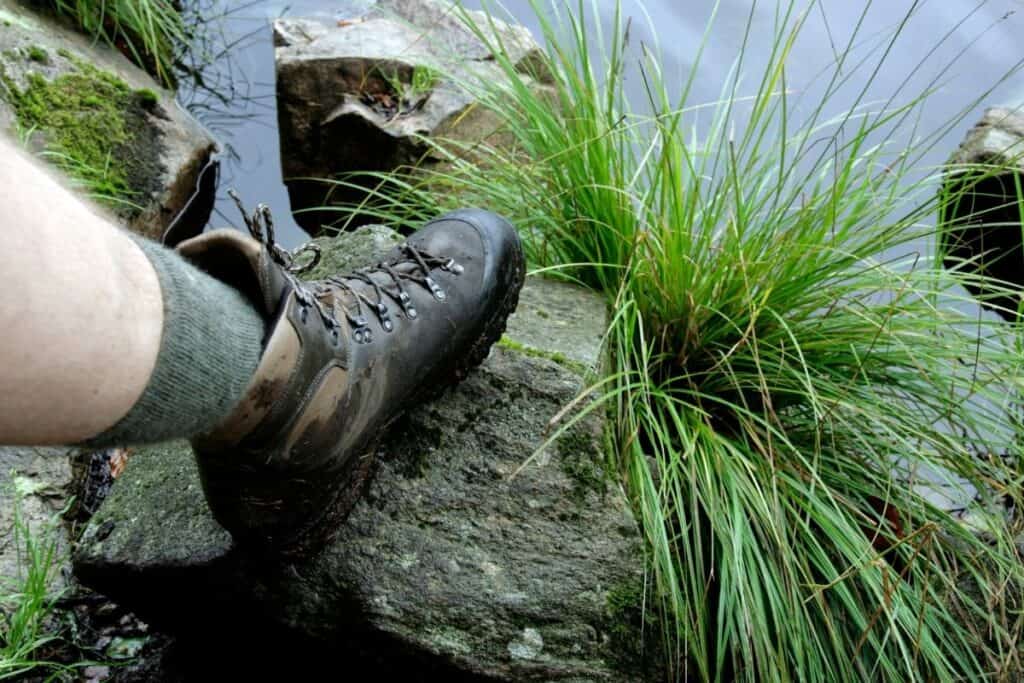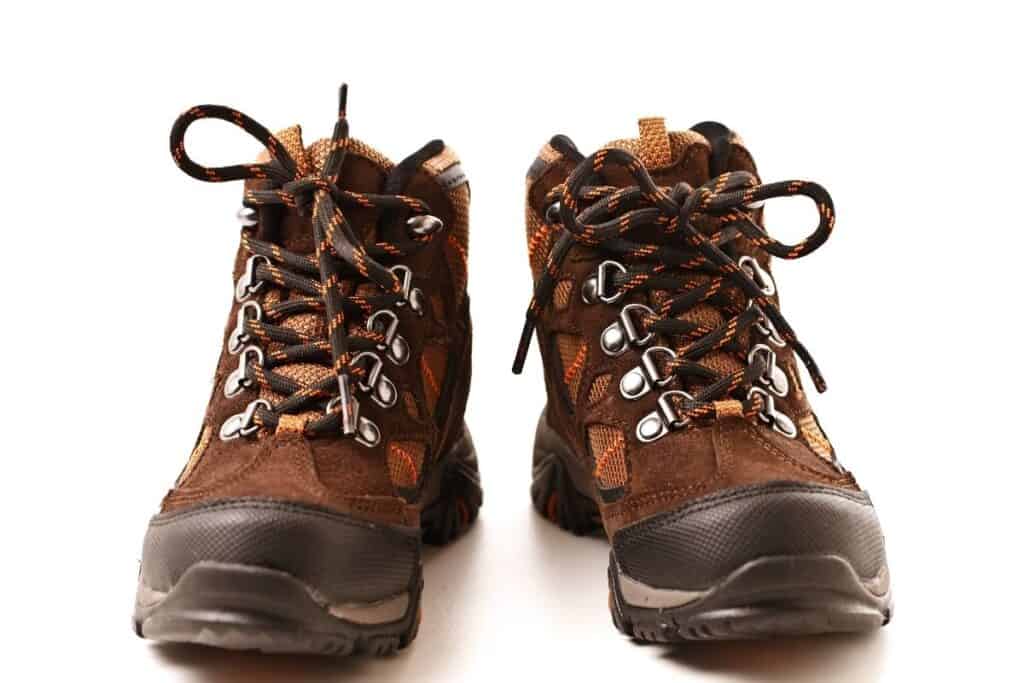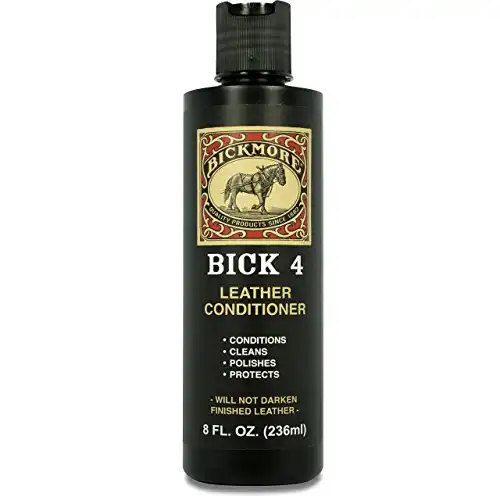
If you’re thinking about getting a nice pair of hiking boots and worried about them fitting for the long-term, then you’ll probably want to take boot shrinkage into consideration. After all, trying to grit out some miles on the trail in hiking boots that are too small does not make for an enjoyable outing!
Hiking boots can shrink over time due to being repeatedly exposed to water and drying out. When combined with heat such as that from the sun, this can cause the boots component materials to further shrink.
Interestingly enough, the mysterious case of “shrinking boots” isn’t always a result of actual material shrinkage. There are also other factors also in play that may make your hiking boots feel tight!
Why Do Hiking Boots Shrink?
As with many scenarios there’s more than one reason for tight fitting hiking boots!
The main reason for true boot “shrinkage” over time is material selection.
Many hiking companies manufacture their boots with chromium-tanned leather. While this material makes for supple and durable boots, it’s also prone to shrinking over time.
The shrinking is a result of the boots getting wet from rain storms, river crossings, or even simple morning dew and then drying out.
Repeat this process over dozens or hundreds of hikes, and voila – you’re going to have some shrinkage! (insert snicker)
This same process can also be the result of the buildup of sweat inside the boots that saturates the material and then dries out. While this route results in less soaking compared to something like a river crossing, it still has the same end result.
Keep in mind that properly caring for your boots by applying conditioner every couple months. Here’s a great leather conditioner to consider if you need to get some.
Bickmore leather conditioner is specially formulated to condition, clean, polish, and preserve all smooth finished leather. It's ideal for reconditioning old or dry leather, as well as maintaining softness, breathability and shine of new leather.
While newer boots are made from synthetic materials that help repel water, and therefore reduce shrinkage, there are usually still some components in the shoe that will shrink over time.
Now while the boot itself can swell, you may have also been surprised when a brand new pair of hiking boots suddenly starts feeling tight and thought “what gives!”
In this situation, it’s not the boots that have changed but your feet!
Hiking and other forms of vigorous activity will cause your feet to slightly swell, sometimes up to an entire half size. This is one of the reasons that the person at the store told you to buy them slightly big 😉
The good news is that your feet will return to their normal size post-hike once the fluids in your body have a chance to redistribute, but that sadly won’t fix your hiking boots. Your best bet will be to see if the store will possibly let you do an exchange of some form, or just consider buying a larger pair.
Finally – and this is one that I had to experience for myself to understand – most people’s feet do not stop growing until the age of 21.
As adults, we don’t often think of ourselves as growing, but the truth is that our bodies take a while to develop and that our feet are less important than some other parts, so they get a bit of delayed growth.
If your boots are feeling tight, it may be time to get fitted again.
Why Does Hiking Boot Shrinkage Matter?

You might be wondering: will a pair of shrunken boots really kill me?
Maybe I can just take them off for a minute and give my feet a breather. They’ll break in soon anyway!
While this may be true, shrinking boots can result in several complications that will flat out ruin your treasured time in the great outdoors.
For one, the material inside your boots may be made for comfort, but if it presses up against your skin, it can cause complications. You might have had to wear a size-too-small pair of shoes at some point in your life, and you can probably remember just how bad that hurt your feet.
Over time, and with the abrasiveness caused by the material hugging your skin, you can get calluses and even cuts. This is more than enough to prevent even the toughest of hikers from enjoying another step down the trail.
The warped fabric and soles can also cause your foot muscles to sit in awkward positions inside your boot, which can cause strains and weakness. Pulling a muscle can turn into a real emergency when you’re forty miles deep in a national park, so you want to avoid this.
Strained and weak muscles also have a hard time doing their job- keeping balance as you make your way up the trails. If you’re on a ledge, climbing a rock, or even walking a relatively flat portion of the trail, you might be prone to a twisted ankle or a sprain.
If you’ve ever been on a height looking down, you know how crucial keeping your balance can be. Hiking demands a lot of hikers, and they want to be able to trust their ankles to do their thing and keep them balanced.
To avoid such health emergencies, you might try breaking in your boots. The easiest way to do this is to simply walk in them. However, we’ve heard tell of a few folk tales that say you can get everlasting boots right from the get-go.
What To Do About Shrinking Hiking Boots
Shrinking hiking boots can be a real disaster for dedicated hikers. The shrinking causes pain in the ankles and toes and can slow you down, making you miss your daily distance target.
So is there anything you can do about it? Can hiking boot shrink be prevented?
The most obvious way to break in your boots is to simply hike! Over time, your feet will settle into the soles, and the material will take your form. The fabric will also contract to better hug your feet without hurting them.
You might get a little discouraged if you’re not noticing a difference in foot pain after four or five hikes, but don’t. Patience is key.
Some estimates say that your average pair of boots will take anywhere from 80 to 100 hours to be properly break in, and if you’re going on two or three-hour hikes regularly (we envy you), that’s around 40 trips.
So what if you don’t have all that time? What if you want to get your boots broken in and get on the trail without worries?
Here’s one old wive’s tale that might just work!
When you get your pair of boots, put them on. Shift your feet around for a minute, and get a feel for them. After that, go out and find a river- this step is crucial. Now, bear with us because this is where it gets weird.
When you’ve found your river, wade into it and walk around for a little while. This will get your boots completely water-logged, which would happen anyway eventually. Don’t be afraid to get a bit dirty.
Next, make your way out of the river and go for a walk. You should keep on walking until the boots are damp instead of waterlogged. Take them home and let them sit in a dry, sunny place if you have it for a few days.
When they finally dry out, you should have a relatively broken-in pair of boots ready to take you across whatever terrain mother nature might throw at you.
How Much Shrinkage is Too Much?
If you’re not too keen on the idea of buying a new pair of boots or walking around in the Hudson, you might be planning to push through. While gritting your teeth and breaking the boots before they break you can be a good strategy, there are a couple of warning signs you might want to pay attention to.
One warning sign is strained muscles. If you start to notice bruising on your feet or weakness/wobbliness, you’ll want to take a break or even consider going up a size.
The cost of a new pair of boots is nothing compared to the X-ray you’ll need to get after you bust an ankle.
Another warning sign is, somewhat obviously, blood. If you’re a tough guy who loves to forge on through adversity, make sure you limit yourself. A cut or laceration in your boots is different from an open-air scratch in that your boots provide the perfect breeding ground for bacteria, and infections can soon follow.
When party-goers ask you about your missing foot or peg-leg, you don’t want to have to say, “Well, a stinky shoe was what did it in.” Just get a new pair, or sanitize your wounds and turn around. It won’t hurt your pride that bad.
Related Articles
Make sure to take a look at these other related resources before you go!

